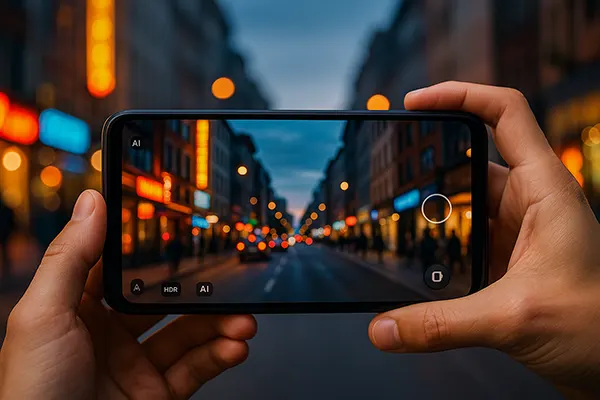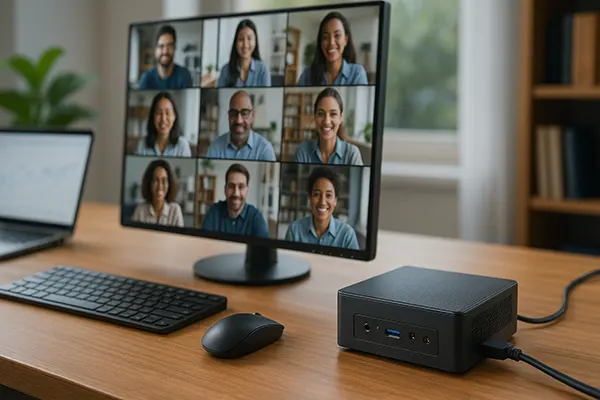
How Artificial Intelligence Is Transforming Mobile Photography
Over the past decade, artificial intelligence has reshaped how we use our smartphones, and photography stands at the forefront of this revolution. Modern mobile cameras are not just lenses and sensors anymore — they are intelligent systems capable of recognising scenes, enhancing lighting, and even predicting user intent. In 2025, AI-powered photography defines how people capture and share the world around them, bridging professional results with everyday convenience.
Smart Image Recognition and Scene Optimisation
One of the most remarkable applications of AI in mobile photography is scene recognition. Smartphones can now identify hundreds of objects and environments — from landscapes and city lights to food and portraits. AI analyses each frame in milliseconds, adjusting colour balance, exposure, and contrast to match the subject. This ensures that users always achieve optimal results without manual adjustments.
Manufacturers such as Apple, Samsung, and Google have embedded neural processing units (NPUs) into their devices, enabling real-time image optimisation. The latest iPhone and Pixel models, for example, employ machine learning algorithms trained on millions of images to recognise subtle lighting differences and adjust accordingly. These features enhance image quality while maintaining a natural look.
In 2025, AI-driven scene detection has become even more refined thanks to continual learning. Devices now update their recognition models through system updates, allowing cameras to adapt to new objects, cultural trends, or even regional landscapes. This dynamic learning approach keeps mobile photography at the cutting edge of innovation.
How AI Improves Colour Accuracy and Texture
Traditional smartphone cameras often struggled with dynamic range and texture detail, particularly in complex lighting. AI has changed this by introducing multi-frame analysis and HDR fusion. These systems merge several frames captured in milliseconds into one balanced image, ensuring accurate skin tones and detailed textures in every shot.
Colour science has also benefited from AI training models based on regional aesthetic preferences. For instance, users in Europe and Asia may experience slightly different tonal calibrations tailored to their visual expectations. This localisation makes photography more personal and context-aware.
Moreover, the 2025 generation of AI cameras employs adaptive white balance correction that considers environmental context. Whether you are shooting under neon signs or in natural daylight, the algorithm identifies the light source and makes precise real-time adjustments for authentic colours.
AI-Enhanced Portraits and Creative Tools
Portrait photography has evolved dramatically through artificial intelligence. Face detection and segmentation algorithms now allow smartphones to differentiate between subject layers, enabling professional-grade depth effects. AI analyses micro-details like hair strands, skin tone, and background light diffusion to deliver natural-looking bokeh without distortion.
In 2025, generative AI has entered the field of creative photography. Users can modify background styles, lighting moods, or even add artistic overlays directly from the camera app. Rather than traditional filters, these systems use neural rendering techniques to simulate professional retouching tools in real time.
Privacy and ethical considerations have also become central to these advancements. Leading manufacturers ensure that all facial recognition data remains processed locally, preventing cloud storage of sensitive biometric information. This balance between innovation and data protection remains crucial in the AI-driven camera ecosystem.
The Rise of Real-Time Retouching and AI Stylisation
Modern smartphones now feature real-time beautification powered by AI. However, unlike the overly processed filters of the past, these systems aim for subtle enhancement. The algorithm learns user preferences, adjusting skin texture or tone in ways that look authentic and preserve individuality.
AI stylisation has expanded into video as well. Many flagship devices in 2025 can automatically stabilise footage, adjust exposure, and even apply cinematic filters during recording. This turns handheld clips into near-professional productions without external software.
Emerging AI art generators integrated into mobile ecosystems also allow users to transform photos into digital paintings or 3D-style visuals. These functions demonstrate how artificial intelligence merges art, creativity, and technology within everyday photography.

Computational Photography and Future Trends
The future of mobile photography lies in computational imaging — a synergy between optics, sensors, and artificial intelligence. Instead of relying solely on hardware, devices now depend on complex data processing to simulate larger lenses and sensors. AI algorithms reconstruct missing details, remove noise, and enhance resolution dynamically.
One major breakthrough in 2025 is AI-powered light-field simulation. This feature enables post-capture refocusing — users can choose the focal point after taking the photo. Such capabilities were once exclusive to professional cameras but are now accessible on flagship smartphones.
Moreover, sustainability has become part of the AI photography conversation. Developers are optimising models to consume less energy while maintaining performance. As a result, advanced image processing no longer drains the battery as it did in earlier generations, making mobile photography both powerful and efficient.
Integrating AI with Augmented Reality and Wearables
Artificial intelligence also powers the new generation of augmented reality (AR) photography. Cameras can now recognise three-dimensional environments, map them accurately, and apply digital overlays seamlessly. This innovation supports AR-guided framing and interactive filters used by brands and content creators.
Wearable devices like smart glasses now integrate AI photography systems capable of capturing first-person perspectives. These tools analyse motion, lighting, and context to adjust camera parameters automatically, offering users intuitive control through voice or gesture recognition.
Looking ahead, AI-driven mobile photography is expected to merge with quantum image sensors and holographic capture. Such developments could redefine how we visualise memories, turning every smartphone into an intelligent imaging assistant capable of perceiving the world almost like the human eye.


